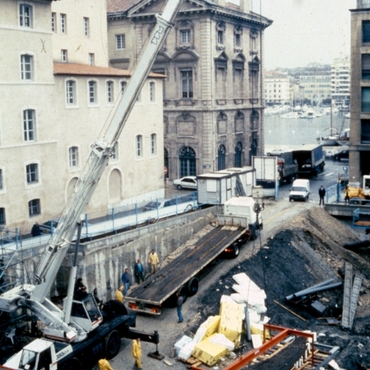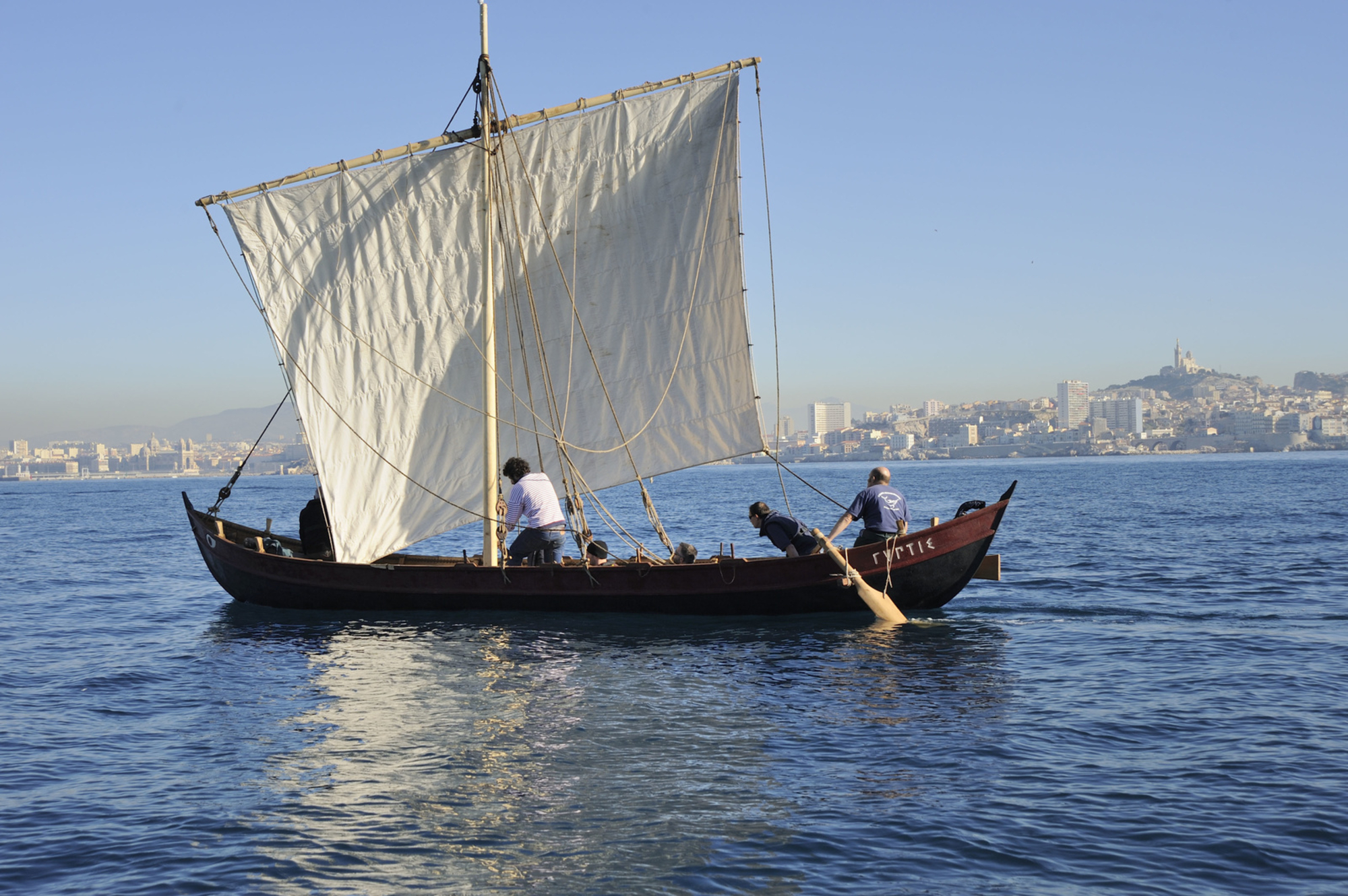
- Home
- A great scientific adventure
- Experimental archaeology
- Project Protis and the Gyptis
Under the direction of Patrice Pomey, the maritime archaeology team at the Centre Camille Jullian (Aix-Marseille University-CNRS) excavated, analysed and scientifically recreated two Greek boats discovered in 1993 during rescue excavations in Place Jules Verne, Marseilles.
Two models...
The wrecks Jules-Verne 7 and 9 are of major archaeological interest. They date from the founding of Marseilles in the second half of the sixth century BC. Their exceptional state of preservation produced some totally new archaeological information, and the sewing technique used to build them was very unusual. Their study gave rise to the building of two replica models at a scale of 1:10.
... and a replica
With funding from organizations in the region, the Centre Camille Julian was able to develop an unprecedented archaeological research programme by the name of PRÔTIS. The goal of the programme was to build and sail a replica of the Jules-Verne 9 boat.
It took more than seven months to build the Gyptis using the skills, techniques and expertise once employed by Phocaean shipwrights, such as assembling the planking without building the frames first, fastening the parts of the boat with kilometres of flax string, and making the boat watertight with a coating of wax and resin.
Once the hull had been decorated and the ballast added, the Gyptis underwent her first sea trials in 2013. Propelled by oars and a 25 m² sail, and steered from the quarter using an oar, she turned out to be a light, fast sailer. The Gyptis represents a real scientific success in that she sheds new light on naval history. And she is also very popular with the general public, her unusual silhouette cutting a dreamlike figure as she glides across the water.








